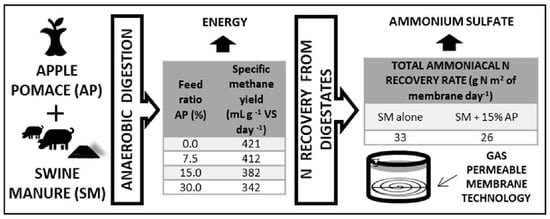Energy and Nutrients from Apple Waste Using Anaerobic Digestion and Membrane Technology
Abstract
Share and Cite
González-García, I.; Riaño, B.; Molinuevo-Salces, B.; García-González, M.C. Energy and Nutrients from Apple Waste Using Anaerobic Digestion and Membrane Technology. Membranes 2022, 12, 897. https://doi.org/10.3390/membranes12090897
González-García I, Riaño B, Molinuevo-Salces B, García-González MC. Energy and Nutrients from Apple Waste Using Anaerobic Digestion and Membrane Technology. Membranes. 2022; 12(9):897. https://doi.org/10.3390/membranes12090897
Chicago/Turabian StyleGonzález-García, Isabel, Berta Riaño, Beatriz Molinuevo-Salces, and María Cruz García-González. 2022. "Energy and Nutrients from Apple Waste Using Anaerobic Digestion and Membrane Technology" Membranes 12, no. 9: 897. https://doi.org/10.3390/membranes12090897
APA StyleGonzález-García, I., Riaño, B., Molinuevo-Salces, B., & García-González, M. C. (2022). Energy and Nutrients from Apple Waste Using Anaerobic Digestion and Membrane Technology. Membranes, 12(9), 897. https://doi.org/10.3390/membranes12090897







